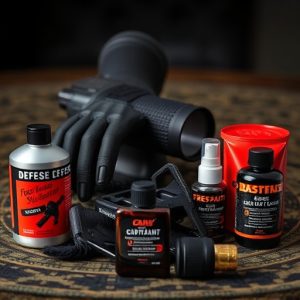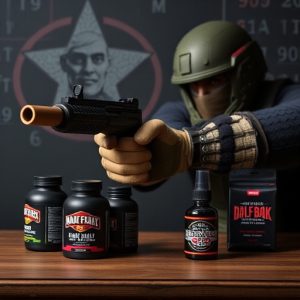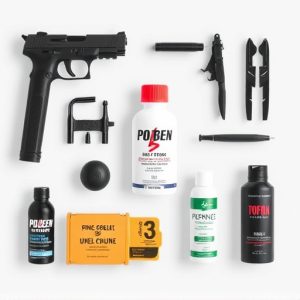Navigating Personal Defense Products: An Overview with Legal and Ethical Insights
Personal defense products are integral for self-protection, serving as both deterrents and security …….
Personal defense products are integral for self-protection, serving as both deterrents and security solutions. These devices are designed to incapacitate attackers temporarily or emit alarms to draw attention and aid. The range of personal defense options includes pepper sprays that cause intense eye and respiratory irritation, stun guns and Tasers that deliver electrical shocks to immobilize aggressors, and various alert systems like personal alarms, keychain tools, whistles, and motion-sensitive floodlights. Users must be knowledgeable about the legal use of these products in their jurisdiction and receive proper training to ensure they are effective when needed. It's equally important to use personal defense devices ethically, avoiding unnecessary harm or conflict. Manufacturers and retailers play a crucial role in educating consumers on both the legal and ethical aspects of using personal defense products responsibly within society.
When it comes to safeguarding oneself in potentially threatening situations, personal protection devices serve as a critical layer of defense. This article delves into the multifaceted world of self-defense products, exploring their purposes, types, legal frameworks, and optimal selection for various demographics. From understanding the spectrum of personal defense products ranging from pepper spray to stun guns, to examining their real-world effectiveness and the importance of training and maintenance, readers will gain insights into maximizing the utility of these tools. Additionally, we’ll review advanced safety technologies on the horizon and analyze case studies that underscore their life-saving potential. Integrating personal defense products with broader safety strategies further enhances one’s preparedness for adverse scenarios. Join us as we navigate the essential role of personal protection devices in promoting individual security and peace of mind.
Understanding Personal Protection Devices: An Overview of Self-Defense Products
Personal protection devices serve as a critical layer of security for individuals seeking to enhance their safety against potential threats. These self-defense products are designed with the intent to deter attackers, incapacitate aggressors, or, at the very least, buy time until help arrives. The range of personal defense products available is extensive, catering to various needs and scenarios. Key among these products are pepper sprays, which deliver a powerful irritant to an assailant’s eyes, temporarily impairing their vision and incapacitating them. Stun guns and Tasers use electromagnetic waves to deliver a high-voltage shock, effectively immobilizing the attacker while minimizing the risk of serious injury to both parties. Personal alarms emit a loud audible signal, drawing attention and deterring potential threats with the sheer noise level. Additionally, self-defense keychains, personal security whistles, and motion-activated floodlights are strategic additions that can complement these more active defense mechanisms. Understanding the appropriate use of each device, along with local laws and regulations, is paramount for effective personal protection. Users should familiarize themselves with the functionality and limitations of each product to ensure they can be relied upon in a critical moment. It’s also advisable to consider personal defense training to effectively use these products, as confidence and skill can greatly enhance their deterrent effect.
Types of Personal Defense Products: From Pepper Spray to Stun Guns
Personal protection devices serve as a critical deterrent against potential threats, providing individuals with a sense of security and control in various situations. The range of personal defense products available is extensive, catering to diverse needs and preferences. Among the most popular and effective are pepper sprays, which are designed to incapacitate an attacker by causing intense irritation to their eyes and respiratory system, offering a non-lethal means of self-defense that’s easy to carry and use. Stun guns, on the other hand, deliver a high-voltage electrical shock that can temporarily immobilize an assailant, making them a reliable option for those seeking a more decisive tool for personal protection. These devices are engineered with various safety features to minimize accidental discharge and ensure they’re ready for use when needed. Both pepper sprays and stun guns are considered legal personal defense products in many regions, but it’s essential to understand local laws and regulations before purchasing or using them. Users should also invest time in training to effectively deploy these devices during critical moments, ensuring their safety and the safety of those around them.
Legal Considerations and Ethical Use of Personal Protection Devices
Personal protection devices serve as a critical deterrent against potential threats, but their deployment must be navigated within the bounds of legal frameworks and ethical considerations. Laws governing personal defense products vary by jurisdiction, dictating not only the permissible types of devices one can carry but also the conditions under which they may be used. For instance, certain states or countries may prohibit the ownership or use of stun guns, pepper spray, or other non-lethal self-defense tools, while others have stringent regulations that require a license or certification for their possession and application. It is imperative to research and understand these legal nuances to avoid inadvertently breaking the law, which could result in criminal charges or fines.
Ethical considerations complement legal ones by addressing the responsible use of personal defense products. Users must weigh the necessity of using such devices against the potential for harm or escalation of conflict. The goal is to protect oneself without causing undue injury or resorting to excessive force. Ethical use means employing these devices only when there is an imminent threat of bodily harm and when there are no viable alternatives to ensure safety. Manufacturers, retailers, and users all share the responsibility of promoting the ethical use of personal defense products through education and adherence to best practices. By doing so, they contribute to a broader societal understanding that safety can be prioritized without compromising the well-being of others or undermining public safety at large.


